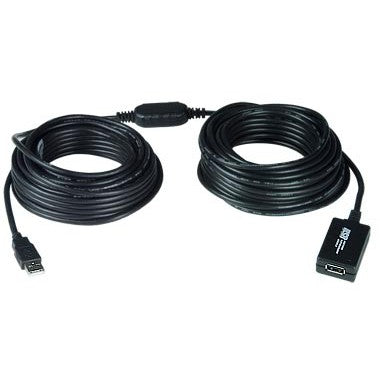How to Beat the Maximum USB Cable Length Limit

USB (Universal Serial Bus) has become an integral part of our daily lives, driving our gadgets, facilitating data transfer, and keeping us connected. But what do you do when you need a USB connection that extends beyond the standard length limit? Whether you're setting up a unique workstation, home theater, or surveillance system, sometimes the standard USB length just doesn’t cut it.
The typical USB 2.0 maximum cable length is about 5 meters or approximately 16 feet. For USB 3.0, the limit drops to around 3 meters. Crossing these lengths without some intervention can lead to data corruption or loss. So, how can we overcome these distance limits? Here are some solutions:
1. USB Repeaters or Active Extension Cables
A USB repeater or active extension cable amplifies the signal of the USB, allowing you to span greater distances. These cables contain active electronics that boost and clean up the USB signal, ensuring data integrity.
How to Use:
- Connect the male end of the active extension cable to your computer or USB hub.
- Connect your regular USB cable to the female end of the active extension.
- If necessary, chain multiple active extension cables together. Most of these cables can be linked together to cover a larger distance, but always refer to the manufacturer's specifications.
2. **USB Over Ethernet (USB to LAN)
This solution is particularly useful for vastly extended lengths. Devices like these can help you extend USB signals over 50 meters using regular Ethernet cables.
How to Use:
- Connect the USB device to the USB-over-Ethernet extender's transmitter unit.
- Use an Ethernet (CAT5e, CAT6, or CAT7) cable to connect the transmitter unit to the receiver unit. This can be a direct connection or via a network switch.
- Connect the receiver unit to your computer or hub.
3. USB Over Fiber Extenders
For very long distances, where even Ethernet won't suffice, USB over fiber extenders can stretch the USB connection up to several kilometers!
How to Use:
- Connect the USB device to the fiber extender's transmitter unit.
- Use a fiber optic cable to link the transmitter to the receiver.
- Connect the receiver to your computer or hub.
4. USB Hubs
This might seem counterintuitive, but in certain situations, adding a powered USB hub can give you a bit more length. When strategically positioned, they can act as repeaters.
How to Use:
- Plug a standard USB cable into your computer.
- Connect the other end to a powered USB hub.
- From the hub, connect another USB cable to reach your desired device.
5. Wireless USB
There are wireless USB extenders that allow you to connect devices without any cables. They work by transmitting data over radio frequencies.
How to Use:
- Plug the wireless USB transmitter into your computer.
- Connect the USB device to the wireless USB receiver.
- Ensure that both the transmitter and receiver are within the specified range.
Precautions:
- Always keep in mind the bandwidth limitations. Extending the USB might lead to reduced speeds, especially if there are multiple devices or high-bandwidth applications like video streaming.
- Ensure you have proper power management. Over longer distances, power drop can be an issue. Powered hubs or active repeaters can help maintain voltage.
- When choosing solutions, consider the USB version you're working with. USB 3.0, for instance, has different specifications and limitations than USB 2.0.
In Conclusion:
While the standard USB cable does have its distance limitations, various technologies and methods can extend its reach considerably. By understanding your requirements and researching the available options, you can easily beat the maximum USB cable length limit.







